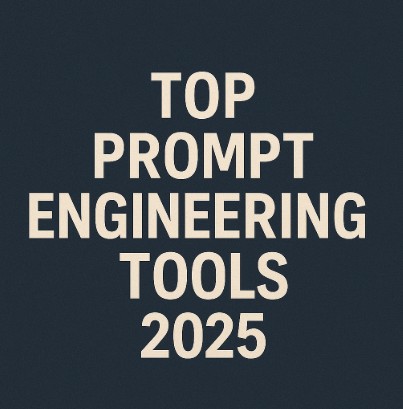The world of artificial intelligence is rapidly evolving, and at the heart of this evolution lies prompt engineering. No longer a niche skill, effective prompt engineering is crucial for harnessing the full potential of AI models. This means crafting precise, effective prompts to elicit the desired outputs from complex AI systems. The challenge lies in finding the right tools to assist in this process. This article will delve into the leading Prompt Engineering Tools available in 2025, providing a comprehensive guide for developers, data scientists, and anyone looking to leverage the power of AI effectively.
Table of Contents
Understanding the Landscape of Prompt Engineering Tools
The need for efficient Prompt Engineering Tools arises from the increasing complexity of large language models (LLMs). These models, while incredibly powerful, require carefully constructed prompts to avoid ambiguous or irrelevant responses. A well-crafted prompt maximizes the accuracy, relevance, and efficiency of the AI’s output. The tools discussed below aim to streamline this process, offering features ranging from prompt generation and optimization to performance analysis and feedback.
Key Features to Look For in Prompt Engineering Tools
- Prompt Generation Assistance: The ability to suggest prompts based on user input and desired output.
- Prompt Optimization: Features that analyze and refine prompts to improve performance.
- Performance Metrics: Tools that provide quantifiable data on the effectiveness of prompts.
- Integration with LLMs: Seamless integration with popular language models like GPT-4, LaMDA, and others.
- Collaboration Features: Support for teamwork and sharing of prompts and results.
Top Prompt Engineering Tools for 2025
The market for Prompt Engineering Tools is dynamic, with new players emerging constantly. However, several tools have established themselves as leaders in their respective niches.
1. PromptPerfect (Hypothetical Example):
PromptPerfect is a hypothetical, yet representative, example of a sophisticated prompt engineering platform. It boasts advanced features such as:
- AI-Powered Prompt Suggestion: Based on your input, PromptPerfect suggests multiple prompts, each tailored to maximize the desired outcome. It even provides explanations for its suggestions, aiding in learning.
- A/B Testing for Prompts: Run controlled experiments to compare the effectiveness of different prompts, providing data-driven insights.
- Real-time Feedback: As you type, PromptPerfect analyzes your prompt and provides immediate feedback, highlighting potential issues and suggesting improvements.
- Integration with Multiple LLMs: Seamlessly integrates with various LLMs, allowing for cross-model comparisons and optimal prompt selection.
2. PromptBase (Existing Tool):
PromptBase https://promptbase.com/ is a marketplace where users can buy, sell, and share prompts. This offers a valuable resource for finding pre-built prompts for various tasks and learning from the experience of other prompt engineers. While not a tool in the traditional sense, it’s an invaluable resource for anyone working with prompts.
3. Promptheus (Hypothetical Example):
Promptheus is another hypothetical tool focusing on complex prompt engineering tasks. Imagine it capable of:
- Chain-of-Thought Prompting: This tool expertly guides the LLM through a step-by-step reasoning process, leading to more accurate and explainable results. This is particularly useful for complex problem-solving tasks.
- Few-Shot Learning Optimization: Promptheus assists in crafting optimal few-shot learning examples, maximizing the LLM’s ability to learn from limited data.
- Advanced Prompt Parameter Tuning: It offers granular control over various prompt parameters, enabling fine-tuning for specific LLM architectures and tasks.
Prompt Engineering Tools: A Deep Dive
Let’s delve deeper into the core functionalities and benefits of using specialized Prompt Engineering Tools.
Advanced Prompt Engineering Techniques
Effective prompt engineering goes beyond simple keyword insertion. Advanced techniques include:
- Few-shot learning: Providing a small number of examples to guide the model’s behavior.
- Chain-of-thought prompting: Guiding the model through a step-by-step reasoning process.
- Zero-shot learning: Prompting the model to perform a task without any examples.
Many advanced Prompt Engineering Tools will incorporate these techniques into their workflow, simplifying the process for users.
Code Example (Illustrative):
While specific code examples will depend on the chosen tool’s API, a generalized concept can be demonstrated. Imagine a Python function interacting with a hypothetical Prompt Engineering Tool API:
# Illustrative Python Example using a hypothetical Prompt Engineering Tool API
import promptengineering_api as api
# Define the initial prompt
prompt = "Write a short story about a robot learning to love."
# Call the API to generate and optimize the prompt
response = api.generate_prompt(
prompt,
model="gpt-4",
optimization_level="high"
)
# Output the optimized prompt and performance metrics
print(response["optimized_prompt"])
print(response["performance_metrics"])
This simplified example showcases the interaction with a hypothetical API, retrieving an optimized prompt and its performance metrics.
Frequently Asked Questions
1. What is the difference between prompt engineering and regular programming?
Regular programming involves explicitly instructing a computer through code. Prompt engineering, on the other hand, involves crafting natural language instructions to guide an AI model towards a desired outcome. It’s less about precise code and more about strategic communication with an intelligent system.
2. Are Prompt Engineering Tools necessary for all AI tasks?
No, for simple tasks, basic prompts might suffice. However, for complex tasks requiring nuanced outputs, accuracy, and efficiency, Prompt Engineering Tools significantly enhance the process. They’re particularly beneficial when dealing with large language models (LLMs).
3. How much does it cost to use Prompt Engineering Tools?
Pricing models vary greatly. Some tools might offer free tiers with limited features, while others may operate on a subscription basis or charge per API call. The cost will depend on the tool’s features and your usage volume.
4. What skills are needed to effectively use Prompt Engineering Tools?
A strong understanding of AI principles and natural language processing is helpful. However, many tools are designed to be user-friendly, minimizing the need for advanced technical skills. Familiarity with the specific LLM being used is also beneficial.

Conclusion
The field of artificial intelligence is constantly advancing, and Prompt Engineering Tools are becoming increasingly vital for unlocking the full potential of AI systems. While the specific tools and features will continue to evolve, the core principles remain consistent: precise communication and iterative refinement. By leveraging the power of advanced Prompt Engineering Tools and understanding the underlying techniques, developers and AI practitioners can achieve unparalleled results.
Mastering the art of prompt engineering is no longer optional; it’s becoming a crucial skill for success in the AI-driven future. Remember to choose tools that align with your specific needs and project requirements. Thank you for reading the DevopsRoles page!
